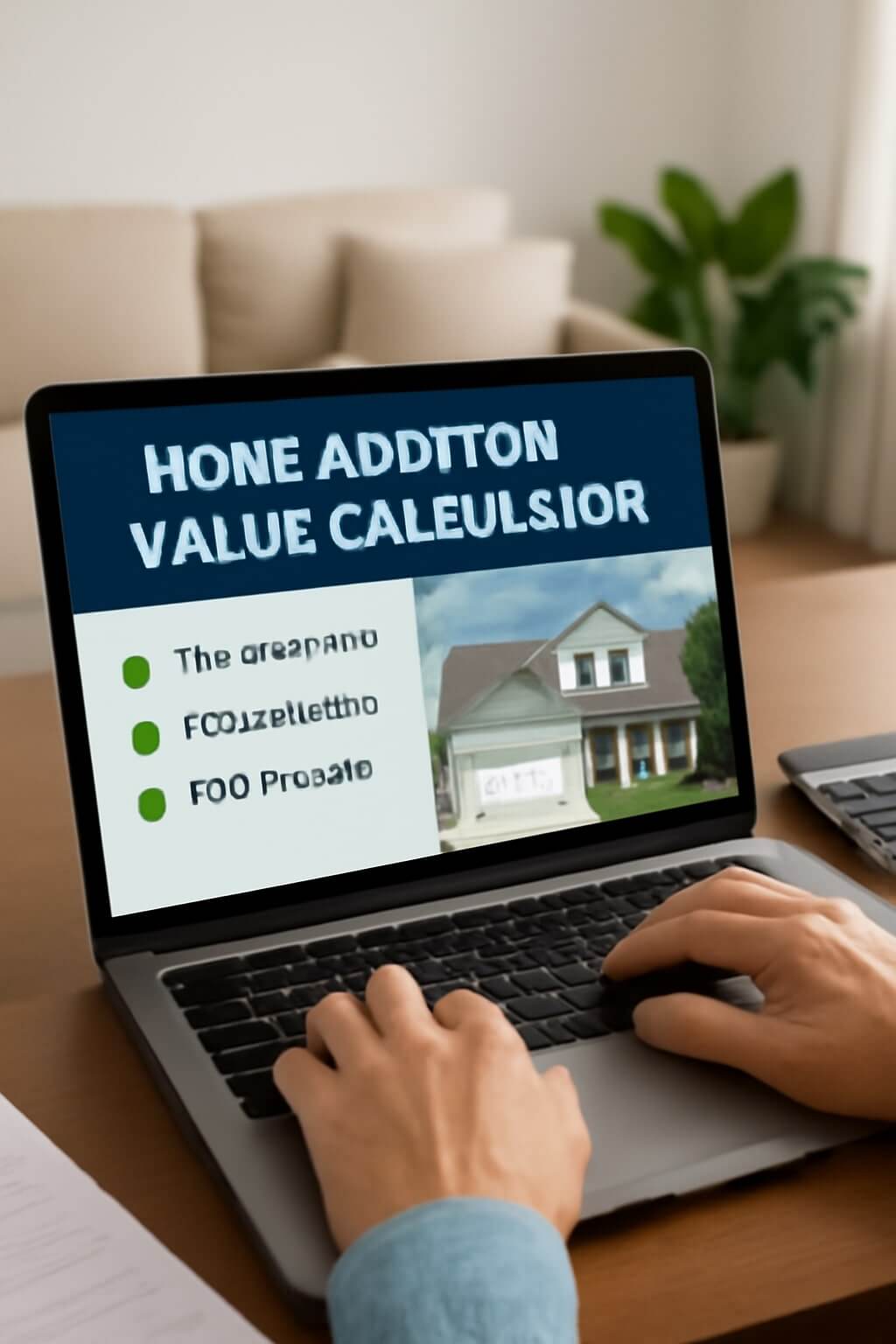When considering a home addition, a value calculator can be an essential tool for you. It provides accurate valuation estimates, helping you understand how much value your renovations could add to your property. By analyzing local market trends, you can align your improvements with buyer expectations. This data-driven approach aids in budgeting and prioritizing projects, ensuring that you make informed decisions. But how exactly can these insights influence your renovation strategy?
Key Takeaways
- Provides accurate valuation estimates to help homeowners understand potential home worth post-addition.
- Supports informed decision-making by assessing projected costs against potential returns effectively.
- Helps identify essential features that enhance functionality and overall property value.
- Aids in navigating local market trends to ensure alignment with buyer preferences and property appreciation rates.
- Reduces the risk of costly mistakes by offering data-driven insights into home renovations.
Accurate Valuation Estimates
Accurate valuation estimates are essential for homeowners considering a home addition, as they directly influence investment decisions.
You need to guarantee calculation accuracy to avoid overestimating costs or undervaluing potential returns. Various valuation methodologies, such as the cost approach or the sales comparison approach, can provide different insights into your home’s worth post-addition.
Understanding Local Market Trends
To make informed decisions about your home addition, you need to analyze current property values in your area.
Understanding how neighborhood demand influences these values can greatly impact your return on investment.
Current Property Values
Understanding current property values is essential for homeowners considering a home addition, as local market trends directly impact these valuations.
To make informed decisions, you should analyze property appreciation rates in your area, which often reflect broader economic conditions.
Pay attention to recent market fluctuations, as these can greatly affect your home’s value post-addition.
By tracking comparable properties and evaluating their appreciation, you’ll gain insights into potential returns on your investment.
Utilizing a home addition value calculator can further refine your understanding, helping you navigate the complexities of property values in a dynamic market.
Neighborhood Demand Analysis
As you evaluate your options for a home addition, analyzing neighborhood demand can provide critical insights into how local market trends might influence your investment.
Understanding market competition in your area helps you identify what features potential buyers prioritize. By examining recent sales data, you can gauge buyer preferences and determine which upgrades will yield the highest return.
Additionally, evaluating the availability of similar properties can reveal if your addition will stand out or blend in. This data-driven approach allows you to make informed decisions, ensuring that your investment aligns with current market dynamics and future buyer expectations.
Budgeting for Your Project
When budgeting for your home addition, it’s vital to accurately estimate project costs based on materials, labor, and unforeseen expenses.
Prioritizing essential features can help you allocate your budget effectively, ensuring that you invest in elements that enhance both functionality and value.
A well-structured budget not only keeps your project on track but also maximizes your return on investment.
Estimating Project Costs
Estimating project costs accurately is essential for any home addition, as it sets the foundation for your budgeting process.
A detailed cost breakdown helps you identify all necessary expenses, from materials to labor, ensuring you’re prepared for financial commitments. By analyzing data on similar projects, you can predict expenses more reliably.
Additionally, incorporating a project timeline into your estimate allows you to account for potential delays and extra costs, which often arise in construction.
This thorough approach not only keeps your budget on track but also empowers you to make informed decisions throughout the home addition process.
Prioritizing Essential Features
After you’ve established an extensive budget for your home addition, the next step involves identifying which features are most important to you. Feature prioritization helps focus your spending on essential features that enhance your home’s value and livability.
| Feature | Importance Level | Estimated Cost |
|---|---|---|
| Expanded Kitchen | High | $25,000 |
| Additional Bedroom | Medium | $20,000 |
| Home Office Space | Low | $15,000 |
Prioritizing Home Improvements
Although many homeowners envision extensive renovations, prioritizing home improvements based on potential value and necessity can lead to more strategic investments.
Implementing effective home improvement strategies requires a keen understanding of project prioritization. Start by evaluating which upgrades will yield the highest return on investment—such as kitchen remodels or bathroom upgrades.
Additionally, consider your family’s current needs and future plans. By analyzing market trends and property values, you can allocate your budget wisely, ensuring that each project enhances both your living experience and your home’s overall worth.
Focus on essential improvements to maximize your investment and satisfaction.
Enhancing Resale Potential
When contemplating home improvements, it’s essential to focus not just on current needs but also on how those changes will affect your home’s resale potential.
Effective resale strategies hinge on understanding market timing and buyer preferences. For instance, adding square footage or modern amenities can greatly boost your home’s appeal.
Identifying High-Value Additions
Identifying high-value additions can greatly impact your home’s overall worth, especially when you leverage data to guide your decisions.
Focus on integrating functional spaces that enhance livability, such as additional bedrooms or expanded kitchens. These improvements often yield better returns than luxury upgrades, which can be subjective and vary by market.
For instance, a finished basement can provide versatile space for recreation or storage, appealing to a broader range of buyers.
Comparing Costs and Returns
Understanding the potential returns on your investment is essential once you’ve identified high-value additions to your home. Conducting a cost benefit analysis allows you to compare project costs against expected returns, helping you set realistic return expectations.
For instance, if a kitchen remodel costs $30,000 but could increase your home’s value by $20,000, you need to weigh that against other options. By analyzing various addition scenarios, you can pinpoint which projects yield the best financial returns.
This data-driven approach empowers you to make informed decisions, ensuring that your investment aligns with your overall financial goals and home improvement strategy.
Supporting Decision-Making With Data
While the emotional appeal of home improvements can be strong, data-driven decision-making is essential for maximizing your investment’s potential.
By utilizing a home addition value calculator, you can make data-driven choices that align with your financial goals. This tool allows you to evaluate projected costs against potential returns, enabling you to make informed investments.
You’ll gain insights into which additions yield the highest value, helping you avoid costly mistakes. Ultimately, relying on data empowers you to confidently navigate the complexities of home renovations, ensuring that every dollar spent contributes meaningfully to your property’s overall worth.
Conclusion
Incorporating a home addition value calculator into your renovation planning empowers you with data-driven insights that can greatly impact your investment. By accurately estimating potential returns and aligning your projects with local market trends, you can make informed decisions that enhance your home’s value. Prioritizing high-value improvements not only maximizes your budget but also supports your long-term financial goals. Ultimately, leveraging this tool guarantees that your renovation efforts yield the best possible outcomes for both functionality and resale potential.

